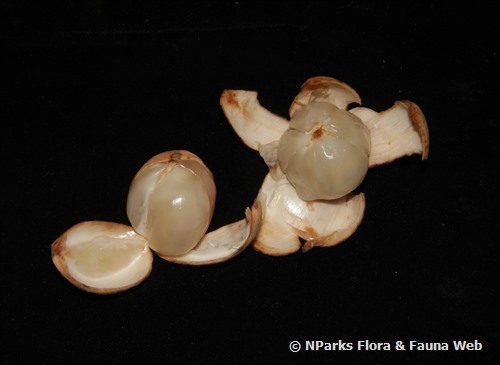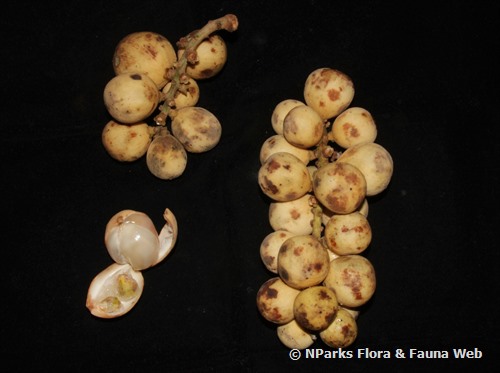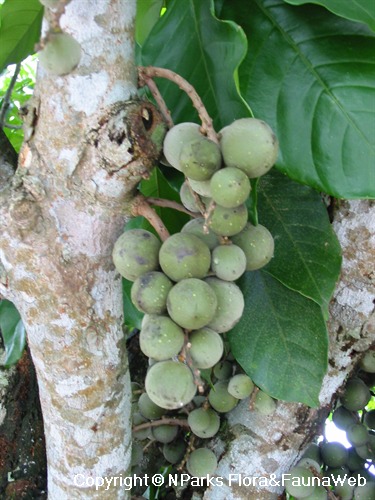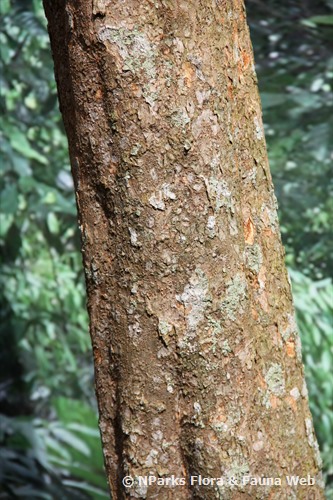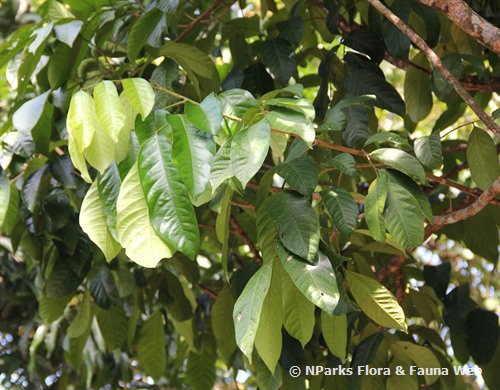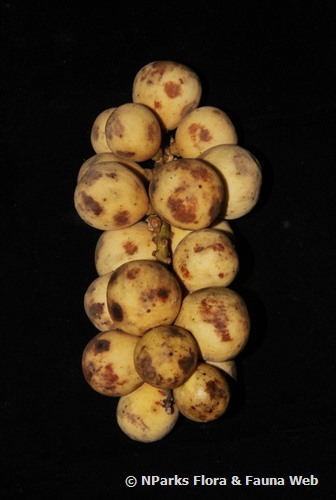
Back
Lansium domesticum Corrêa
| Family Name: | Meliaceae |
| Common Name: | Langsat, Duku, Langsat Hutan, 榔色木 |
Name
Classifications and Characteristics
| Plant Division | Angiosperms (Flowering Seed Plants) (Dicotyledon) |
|---|---|
| Plant Growth Form | Tree (Medium (16m-30m)) |
| Lifespan (in Singapore) | Perennial |
| Mode of Nutrition | Autotrophic |
Biogeography
| Native Distribution | Thailand, Malaysia, Philippines and Indonesia |
|---|---|
| Native Habitat | Terrestrial |
| Preferred Climate Zone | Tropical |
Description and Ethnobotany
| Growth Form | A medium sized tree up to 15 m tall in cultivation and to 30 m tall in wild. |
|---|---|
| Foliage | The compound leaves have 5 to 7 alternately arranged leaflets. The leaflets are obovate to elliptic, measuring 7-20 cm long. Upperside of the leaflet (adaxial surface) is dark-green and smooth, while the underside (abaxial surface) is pale-green and dull. |
| Flowers | Flowers are small, creamy-yellow colored, borne in clusters on trunk or old branches. |
| Fruit | Fruits are oval or nearly round, about 2.5-5 cm in length, turning to brownish-yellow when ripe. The fruit skin is leathery, excluding milky latex when broken. The fruit flesh is divided to segments, and some segments contain seeds. |
| Habitat | Found in humid rain forests up to 800 m altitude. |
| Cultivation | Plants do well in a humid atmosphere, in deep, drained, fertile loamy soils and cannot tolerate alkaline soil. Langsats can be grown from seeds. The seeds will soon lose viability, so they should be planted soon after detached from the fruit. |
| Ethnobotanical Uses | Edible Plant Parts : Edible Fruits Food (Fruit or Vegetable): The fruit flesh (aril) is juicy and sweet, usually eaten fresh. Medicinal: In Malaysia and Indonesia, a decoction of the bark or leaves is used to treat dysentery, the bark is also used for scorpion stings. The seeds have anti-fever properties, besides being effective against intestinal worms. |
Landscaping Features
| Landscape Uses | Suitable for Roadsides, Parks & Gardens |
|---|---|
| Thematic Landscaping | Economic Garden |
Plant Care and Propagation
| Light Preference | Full Sun |
|---|---|
| Water Preference | Moderate Water |
| Plant Growth Rate | Moderate |
| Rootzone Tolerance | Moist Soils, Fertile Loamy Soils |
| Propagation Method | Seed, Stem Cutting, Grafting, Air-Layering |
Foliar
| Foliage Retention | Evergreen |
|---|---|
| Mature Foliage Colour(s) | Green |
| Foliar Type | Compound |
| Leaf Area Index (LAI) for Green Plot Ratio | 4.0 (Tree - Dense Canopy) |
Floral (Angiosperm)
| Flower Colour(s) | Yellow / Golden |
|---|---|
| Flower Grouping | Cluster / Inflorescence |
Fruit, Seed and Spore
| Mature Fruit Colour(s) | Brown, Yellow / Golden |
|---|---|
| Mature Fruit Texture(s) | Smooth |
| Fruit Type | Fleshy Fruit |
| Seed Quantity Per Fruit | Few (1-5) |
Image Repository
Others
| Master ID | 1701 |
|---|---|
| Species ID | 2994 |
| Flora Disclaimer | The information in this website has been compiled from reliable sources, such as reference works on medicinal plants. It is not a substitute for medical advice or treatment and NParks does not purport to provide any medical advice. Readers should always consult his/her physician before using or consuming a plant for medicinal purposes. |

